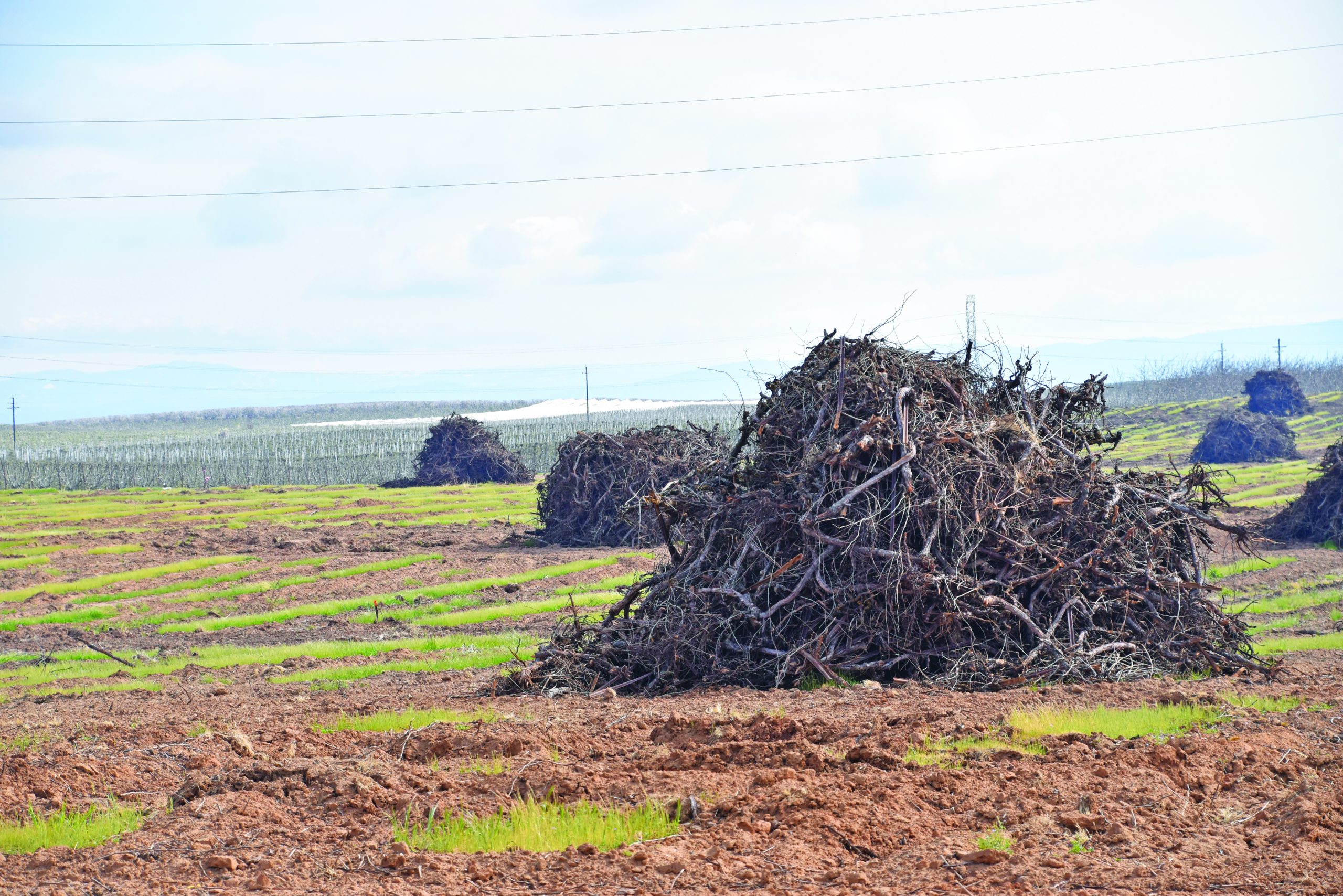By Craig W. Anderson
California’s winegrape industry has an imbalance in supply and demand for wine and to correct this a leading California wine marketing association says the state needs to remove 50,000 acres of winegrapes to balance supply with decreasing market demand.
According to Jeff Bitter, president of Fresno-based Allied Grape Growers, growers have significant market issues with any above-average crop. “We need to reduce acreage. It’s only a matter of time before growers face drops in price that may not be sustainable for some of them.” He explained that it could take years or a major market correction for California’s winegrape sector to balance supply with demand.
“It’s horrible, scary for family farms,” said SJFB Executive Director Andrew Genasci. “There’s no good commodity to transfer into, in lieu of winegrapes for many growers.” He said the “Big Three – walnuts, almonds and grapes – are all down and there’s no safe harbor, no place to turn to as a substitute for winegrapes.”
He noted that significant acres of winegrapes are going fallow and “land that usually supports people is now open ground. Growers are trying to keep employees and put food on the table. It’s a challenge.”
“It’s tough out there and everyone in the industry’s hoping this situation will be short term,” said Kevin Phillips, CEO of Jahant Vineyards LLC. “The problem with supply and demand is that the largest wine drinking demographic is getting older and not buying as much wine as they once did and they’re not being replaced by millennials. More options such as seltzers and mixes are out there and we’re seeing a decline in wine consumption.”
“It’s an absolutely brutal industry-wide situation,” he said.
Consumer confidence continues to waver with the pandemic still causing uncertainty regarding the future. The recent pandemic led to a rise in wine consumption as people cut back on dining out, instead purchasing sufficient wine to drink at home.
Another aspect Phillips explained is that while wine remains the healthiest alcoholic drink, media messaging discouraging alcohol consumption in general has had an impact. A Gallup survey of consumers 18 to 34 years old revealed that 52% considered moderate drinking to be detrimental.
A Gallup poll taken in the summer of 2023 revealed for the first time in 30 years that wine trailed both beer and hard liquor as a favorite alcohol beverage.
Winegrape acreage considered for removal must be considered in different ways, said winegrape grower Brad Goehring of Clements. “There are a lot of old vineyards out there that would be a good place to start. If a vineyard nearing its end of production can be taken out, this needs to be related to the total being removed.”
He said each growing operation has unique aspect of their operation and “a lot of analysis will probably be required to determine the most effective results.” Goehring added, “Some growers can’t afford the costs of removal.”
Larger growers will be able to rotate crops in their least productive blocks while others, he said, might leave their land fallow and “let the land rest. Others could rework and retrain the vines as a short-term fix. We’ve seen these times before and growers respond quickly.”
Removing vineyards creates costly challenges for growers, said Lodi District Grape Growers Association Executive Director Amy Blagg. “The phase-out of burning the vines, trellises and other waste from a vineyard has growers looking at alternatives such as approved curtain burning, which is expensive, and chipping which has its own challenges such as wires in trellises along with other materials that can’t be chipped.”
Blagg said voucher funding has helped growers but the funds for the program are nearly exhausted.
According to Stuart Spencer, executive director of the Lodi Winegrape Commission, as significant acreage is pulled out “we’ll see more acreage go to other crops or fallowed. The recovery of the supply and demand balance will happen as quickly as wines are removed from the system.” Then, he explained the challenge will be “what other crops can we work with? Many growers will fallow to allow land to rest for other crops or the return of grapes.”
When that happens, Spencer feels many growers will have initiated diversified operations which will save small growers as a hedge against future supply and demand situations. But the industry will still face labor and equipment and other costs involved in planting new crops or reestablishing winegrapes.
A report by The Drinks Business said, “This is a challenging time for the wine industry; [however] it’s important to remember that vineyards are often removed and replanted to maintain the quality of the grapes and the longevity of the vineyard. The removal of vineyards can also be a strategic move to align supply with demand.”
“This has happened in the past and the wine industry has come back,” Genasci said. “There’s not a lot of optimism out there right now but consumers are fickle and interests could change.”
“Growers are looking at alternatives to winegrapes such as pistachios, mandarins, row crops and fallowing,” Blagg said. “It’s cyclical and we see it happening with other crops.”
She said the wine industry has to figure out new and innovative ways to reach those wine drinking consumers both old and new to enjoy wine, nature’s product.



